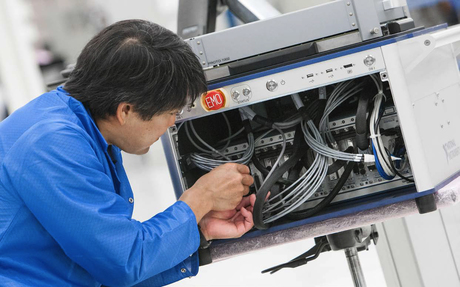Keeping up with evolving wireless technology
By David Hall, Principal Product Marketing Manager, RF, National Instruments
Wednesday, 30 November, 2016

The pace of change and innovation in wireless technology today is absolutely breathtaking. You likely remember receiving your first text message or downloading your first web page on a mobile phone. Today, a mobile phone can download high-resolution video in seconds and provide higher data throughput than your first laptop. However, the goal of tomorrow’s wireless is much more than just giving you faster download speeds.
Within a decade, the number of connected devices will outnumber connected people 10 to 1. As a result, future wireless standards are evolving to address new use cases for connecting things instead of merely people. Future devices will not only use new wireless technologies but also require new instrumentation and carry a lower price tag. To enable new mission-critical applications such as self-driving cars and remote telemedicine, we need wireless technologies we would trust with our lives. These devices demand a different approach to wireless testing.
The requirements of tomorrow’s wireless technology are not only driving new wireless standards such as NB-IoT, 5G and 802.11ax, they are also changing the way engineers design and test mobile devices. For example, wider bandwidths in future standards such as 5G require wider bandwidth RF instruments. In addition, multi-antenna technologies like MIMO and beamforming produce a need for modular and flexible instrumentation that can scale from testing single-antenna devices to 8x8 MIMO devices and beyond. Finally, lower cost radios also require lower cost approaches to wireless test. In a scenario where wireless radios will cost just 20% of today’s prices, next-generation test equipment must be capable of faster and more parallel test approaches.
Today, the evolution of wireless technology demands a new approach to RF design and test, and that demand is forcing vendors to innovate. Users are asking for test instruments that combine wider bandwidth and extended frequency range, along with user-programmable FPGAs. These kinds of instruments serve applications from R&D to manufacturing test, with FPGA-enabled applications enabling measurement acceleration, channel emulation and more. In other words, providing solutions that address some of today’s most challenging wireless test requirements while offering the flexibility to address tomorrow’s test needs.
Although the next wave of wireless technologies, from 5G to 802.11ax to wideband radar, will introduce significant design and test challenges, the next generation of test instrumentation will meet those requirements and enable engineers and scientists to meet the challenges of tomorrow, today.
The new wildfire reality: mapping a response
Firefighter-turned-researcher Chris Dunn is helping pioneer data-driven solutions to tackle...
ARCIA update: LMR is not dead yet
Be it mining, rail, public safety, transport or utilities, everyone is embracing new technology...
Towards 1 Tbps throughput using sub-terahertz bands
In order to enable the near-instantaneous communication promised by 6G, ultrahigh data speeds...





